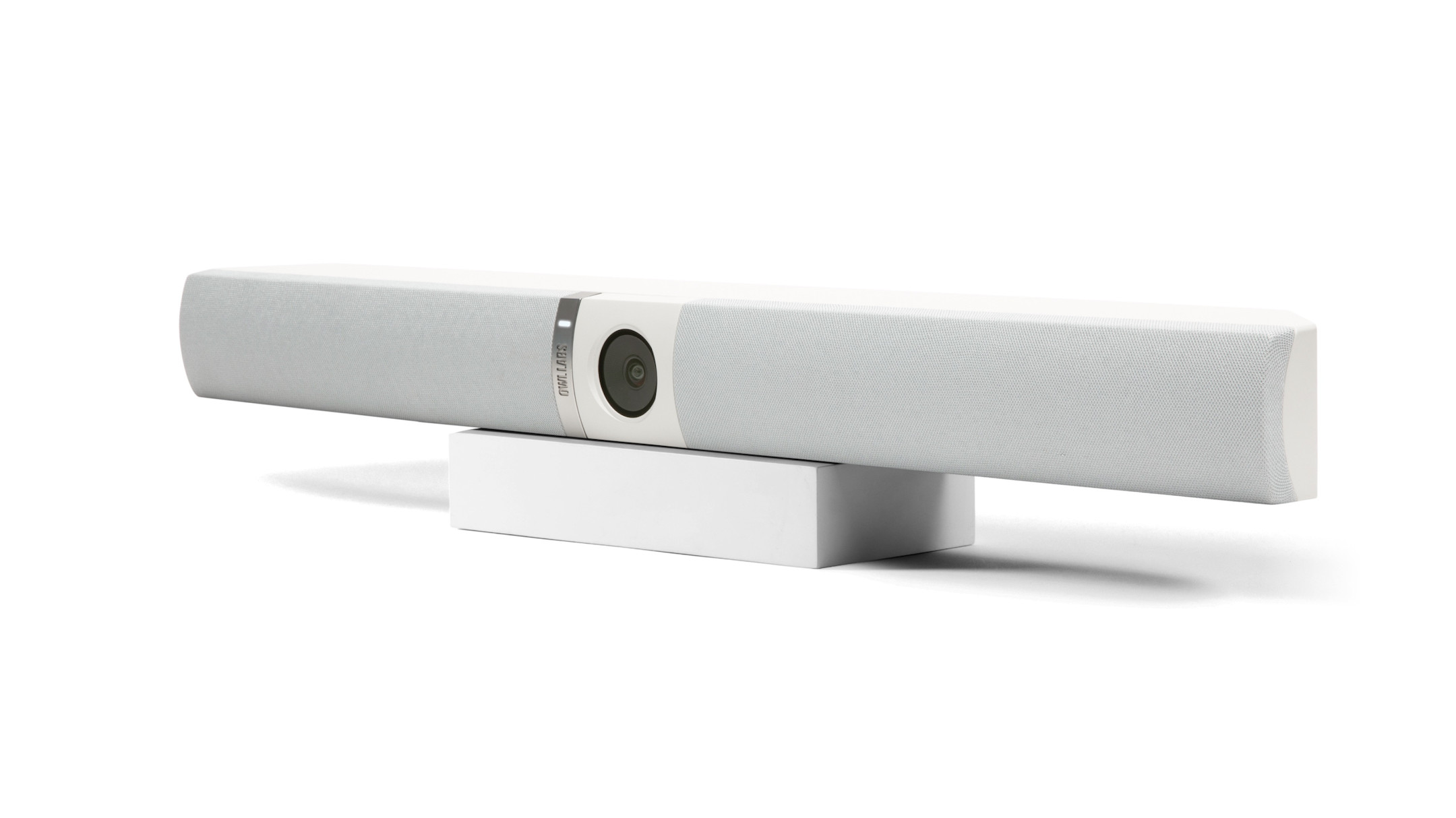

£1,722.30*


Product information
Revolutionise your video conferencing with the Owl Bar from OWL LABS
Take your virtual meetings to the next level with the Owl Bar from OWL LABS. With this state-of-the-art technology, every external participation becomes a seamless and interactive experience. Thanks to the integrated camera, microphones and speakers at the front of the room, the Owl Bar allows everyone to participate and interact as if they were there in person. Perfectly designed for modern offices and conference rooms, the Owl Bar offers an intuitive and user-friendly solution to improve communication and collaboration within your team.

Experience the following highlights:
- Camera quality: 4K resolution with a 30 MP digital camera, equipped with pan, tilt and zoom functions for razor-sharp images.
- Extensive audio coverage: Four beamforming microphones and a high-fidelity speaker ensure clear sound up to 5.5 metres away.
- Intelligent technology: The Owl Intelligence System™ uses AI and computer vision to automatically focus on the person speaking in the room.
- Versatile compatibility: Supports all popular web-based video conferencing platforms such as Zoom, Microsoft Teams and Google Meet.
- Connectivity: Includes USB 3.0 (Type C and Type A), HDMI outputs and robust network access via Ethernet as well as WLAN.
Easy installation and versatile use
The Owl Bar is not only powerful, but also extremely user-friendly. Both a table stand and a wall bracket are included in the scope of delivery, allowing flexible placement in the room. Installation is a breeze thanks to plug-and-play connectivity that allows instant integration into your existing system. Whether placed on the table or mounted on the wall, the Owl Bar blends seamlessly into any room while offering the option of purchasing a special TV mount to optimally position the Owl Bar under your conference room TV.
Future-proof and compatible
With the Owl Bar from OWL LABS, you are ideally equipped for the future. The ability to wirelessly connect with other devices from the OWL LABS portfolio, such as the Meeting Owl and the Whiteboard Owl, opens up new dimensions of interactive collaboration and makes the Owl Bar an indispensable tool for any modern organisation.
Experience how the Owl Bar transforms your business meetings and encourages lively, interactive and productive communication within your team.
Technical data
| Name | Owl Labs Owl Bar Video conferencing system, 4096 x 2400 4K, 30 MP, 114° |
|---|---|
| Article number | 1000030676 |
| GTIN/EAN | 0850022203602 |
| Manufacturer SKU | CG82367 |
| Model name | Owl Bar |
| Brand | Owl Labs |
| Product Type | Video conferencing system |
| Resolution | 4096 x 2400 4K |
| Camera resolution | 30 MP |
| Field of view | 114° |
| Inputs | 1x HDMI , 1x USB-A , 1x USB-C |
| Outputs | 2x HDMI |
| Product width | 76.9 cm |
| Product height | 7.6 cm |
| Product depth | 9.7 cm |
| Weight | 1.88 kg |
| Colour | White |
| Delivery contents | Power cable , Quick user guide , USB cable , mount , mounting material |
| Condition | New |
| Warranty | 24 Month |
| Warranty type | Bringin service Service and support information |
Product safety
| Company |
|---|
| Owl Labs |



